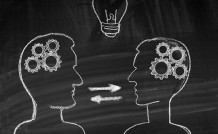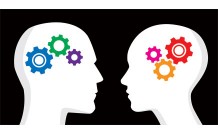Online Class: How to Read Body Language

no certificate
with CEU Certificate*
-
13Lessons
-
13Exams &
Assignments -
7,701Students
have taken this course -
7Hours
average time -
0.7CEUs
Course Description
Unlock the Secrets of Non-Verbal Communication: Master Body Language
In the vast spectrum of human interaction, words are just the tip of the iceberg. Beneath the surface lies a complex world of non-verbal cues that play a crucial role in shaping our interpretations, perceptions, and reactions. The silent language of the body reveals more than words ever could. Mastering this intricate dialect can unlock deeper insights into human emotions and intentions, paving the way for more meaningful connections in both personal and professional realms.
Understanding body language is akin to possessing a superpower. Imagine recognizing deceit through a fleeting expression, gauging confidence from a stance, or even discerning discomfort from the subtlest of gestures. This prowess can elevate your interpersonal skills, providing invaluable tools for situations ranging from interviews to intimate conversations.
Course Overview:
This meticulously crafted course demystifies the art and science of body language, offering a comprehensive exploration into its multifaceted dimensions:
- Introduction to Body Language: Delve into the basics, unraveling the significance and impact of non-verbal cues.
- Body Language Basics: A deep dive into fundamental gestures, postures, and expressions that form the core vocabulary of body language.
- Body Language Varying by Group: Explore how demographic factors like age, gender, and cultural background influence non-verbal communication.
- Body Language That Displays Different Emotions: Decode emotions from joy to jealousy, and everything in between, by interpreting their physical manifestations.
- How to Read Body Language: Equip yourself with analytical tools and keen observational skills to interpret non-verbal cues effectively.
- Using Body Language to Your Personal Advantage: Harness the power of body language in personal settings, from social gatherings to intimate encounters.
- Using Body Language in Your Career: Strategies and insights for leveraging non-verbal cues in professional scenarios, from boardroom meetings to networking events.
- Discovering Patterns: Identify recurring body language patterns in individuals, helping you predict and respond to their actions or feelings.
- The Power of First Impressions: Understand the lasting impact of initial encounters and learn to make them count.
- Asking the Right Questions, Listening to the Answers: Cultivate the art of effective questioning and active listening, enhancing communication.
- The Power of Intuition: Recognize the subconscious cues that drive our instincts and how to trust this internal compass.
- Self Reflection: An introspective module to understand your own body language patterns and areas of improvement.
- Supplemental Information: Additional resources and readings to deepen your understanding and application of body language.
Why Enroll?
Imagine walking into a negotiation, already attuned to your counterpart's mindset through their body language. Think of the personal relationships that can be deepened by sensing unspoken feelings. A myriad of real-life applications unfold:
- Job Interviews: Gauge your interviewer's reactions in real-time, adjusting your responses for maximum impact.
- Dating: Navigate the intricate dance of early relationships by reading and responding to your partner's non-verbal cues.
- Networking: Build instant rapport by mirroring body language and recognizing openness or reservation in others.
As the famous saying goes, "Actions speak louder than words." Yet, in the world of body language, it's the silent actions that resonate the loudest. Enroll now and navigate the world with renewed insight and confidence. The secrets of non-verbal communication await!
Course Motivation
When you talk to someone by waving your hand, nodding your head, or even crossing your arms, you are communicating. Body language is the phrase we use for these movements and gestures. This also incorporates the most subtle of movements that people may not be aware of, including winking, the slight movement of the eyebrows, and other facial expressions.
Paralanguage is defined as nonverbal communication. Body language is a part of paralanguage and it has been studied in the psychology field by many experts, in particular, the involuntary body language like smiling and frowning.
People send and receive nonverbal messages and signals all the time without even knowing it. In the grocery store, you may see a woman pick up a green pepper and frown. She's not aware that the signal she's sending out is one of disapproval. Some people see it and some people don't. These signals may indicate what a person is truly feeling. The technique of "reading" people is used quite often. For example, we teach our children from an early age to look people in the eye when speaking. Children tend to look up and down, everywhere except into the other person's eyes.
Maintaining eye contact is an indicator that the person is positively thinking about what is being said to them. In other situations, it can mean that the person doesn't want to take his eyes off the other, which can mean a sign of distrust. A person who makes direct eye contact, but plays with the chipped paint on the table at the same time, or plays with his hands, may not be really paying attention to you; he's distracted and his attention is elsewhere. There are also those individuals who have been diagnosed with an attention deficit disorder and cannot continuously maintain eye contact; they are simply unable to do this. So, you don't want to make a hasty judgment without considering all of the factors to the situation.
The most basic and dominant form of body language occurs when a person crosses their arms. This particular gesture can be interpreted in many different ways. Sometimes it can mean they are putting up a wall between themselves and others, sort of like protection. It can also indicate they are cold, and are crossing their arms for warmth. Maybe you are in a business meeting and the man across from you crosses his arms. This doesn't always mean he's trying to put a barrier between himself and the speaker; rather, it could mean he's listening intently and taking in all of the information. On the other hand, it could be looked upon as a warning signal that the person is very upset. If he is leaning back in his chair and has a frowning or callous expression on his face, this may be a good indicator of hostility. Such a person is not an ally, and may have controversial motives.
Disbelief can be indicated by a gaze that wavers around a speaker's head instead of looking them directly in the eye. When someone rubs their chin or touches their ear, this can also mean they don't believe what is being said. When a person is not being convinced by what someone is saying, their attention invariably wanders, and the eyes will stare away for an extended period.
You will know right away that you've encountered a bored person, as they will be looking at anything but the speaker. They are likely to tap the table with their fingers or tap their feet. Sometimes they do this repeatedly. You will most likely see them looking around the room from the speaker to the clock on the wall and back again. They might fidget in their seat, play with their hands, or tilt their neck.
There are also cultural differences in people that could lead to a misunderstanding of body language, so be careful about your analysis and consider all of the factors first.
By enrolling for this course, you have demonstrated your interest in understanding body language. And you are not alone. There are many people who are fascinated by the idea of being able to read someone's body language once the concept is introduced to them. One of the things that may surprise people is that body language, or nonverbal communication, makes up more of what we usually say than does verbal language.
Being able to understand and read body language is a very useful tool. You will be pleasantly surprised to learn that you can use the art of reading body language to:
- understand what someone means, even when they aren't saying it
- use it to your advantage for employment and interviews
- avoid aggressive situations that can become more heated
- learn what factors can affect body language, such as alcohol
- put your best foot forward for presentations and meetings
- discover patterns in someone's body language
- use self reflection to avoid negative behavior to be seen by others
Those are just a few things that one can learn from understanding how to read body language. At first it may seem complex, but once you learn some of the common things that people do in varying situations, it will become easier to detect and respond to someone's body language.
Body language is a non-verbal way of speaking. It is an unspoken language that often says more than what is being said verbally. It is a form of body communication that looks at what is being said beyond the verbal language. Body language is a subcategory of paralanguage, which is the area of human communication that is nonverbal. It can include such things as raising the eyebrow, winking, or a number of other facial expressions.
When considering body language it's important to keep in mind that some of it can be voluntary, while some is involuntary. Voluntary body language would include things like the way someone stands, folds their arms, or smiles. Involuntary body language is a little more complex, as it includes such things as blood rushing to the face when someone is embarrassed. This involuntary form of body language often covers facial expressions that someone does not deliberately make.
- Completely Online
- Self-Paced
- Printable Lessons
- Full HD Video

- 6 Months to Complete
- 24/7 Availability
- Start Anytime
- PC & Mac Compatible
- Android & iOS Friendly
- Accredited CEUs
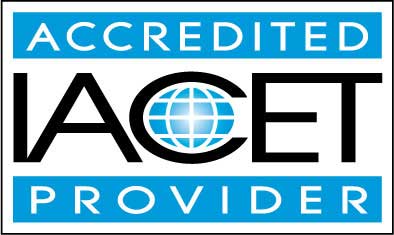
Course Lessons
Lesson 1: Introduction to Body Language
 Lesson 1 Video
Lesson 1 Video Lesson discussions: Reasons for Taking this Course
Lesson discussions: Reasons for Taking this Course Complete Assignment: An Introduction
Complete Assignment: An Introduction Assessment: Lesson 1 Exam
Assessment: Lesson 1 Exam
Lesson 2: Body Language Basics
 Lesson 2 Video
Lesson 2 Video Assessment: Lesson 2 Exam
Assessment: Lesson 2 Exam
Lesson 3: Body Language Varying by Group
 Lesson 3 Video
Lesson 3 Video Assessment: Lesson 3 Exam
Assessment: Lesson 3 Exam
Lesson 4: Body Language That Displays Different Emotions
 Lesson 4 Video
Lesson 4 Video Assessment: Lesson 4 Exam
Assessment: Lesson 4 Exam
Lesson 5: How to Read Body Language
 Lesson 5 Video
Lesson 5 Video Assessment: Lesson 5 Exam
Assessment: Lesson 5 Exam
Lesson 6: Using Body Language to Your Personal Advantage
 Lesson 6 Video
Lesson 6 Video Assessment: Lesson 6 Exam
Assessment: Lesson 6 Exam
Lesson 7: Using Body Language in Your Career
 Lesson 7 Video
Lesson 7 Video Assessment: Lesson 7 Exam
Assessment: Lesson 7 Exam
Lesson 8: Discovering Patterns
 Lesson 8 Video
Lesson 8 Video Assessment: Lesson 8 Exam
Assessment: Lesson 8 Exam
Lesson 9: The Power of First Impressions
 Assessment: Lesson 9 Exam
Assessment: Lesson 9 Exam
Lesson 10: Asking the Right Questions, Listening to the Answers
 Lesson 10 Video
Lesson 10 Video Assessment: Lesson 10 Exam
Assessment: Lesson 10 Exam
Lesson 11: The Power of Intuition
 Lesson 11 Video
Lesson 11 Video Assessment: Lesson 11 Exam
Assessment: Lesson 11 Exam
Lesson 12: Self Reflection
 Lesson 12 Video
Lesson 12 Video Assessment: Lesson 12 Exam
Assessment: Lesson 12 Exam
Lesson 13: Supplemental Information
 Lesson 13 Video
Lesson 13 Video Lesson discussions: The Importance of Body Language; Course Comments; Program Evaluation Follow-up Survey (End of Course)
Lesson discussions: The Importance of Body Language; Course Comments; Program Evaluation Follow-up Survey (End of Course)
Learning Outcomes
- Describe basics behind reading body language.
- Describe variations in body language of different groups.
- Identify and describe body language that displays different emotions.
- Summarize body reading techniques and clues.
- Summarize using body language to your personal advantage and to help your career.
- Identify patterns in a person's body language and interpret what they mean.
- Recognize and use the power of intuition.
- Perform self reflection on yourself and analyze your own body language messages.
- Demonstrate mastery of lesson content at levels of 70% or higher.
Additional Course Information
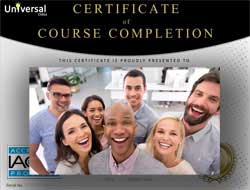
- Document Your Lifelong Learning Achievements
- Earn an Official Certificate Documenting Course Hours and CEUs
- Verify Your Certificate with a Unique Serial Number Online
- View and Share Your Certificate Online or Download/Print as PDF
- Display Your Certificate on Your Resume and Promote Your Achievements Using Social Media
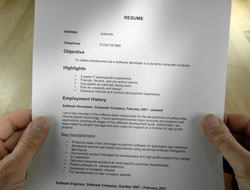
Choose Your Subscription Plan
No Certificate / No CEUs
This course only
| Includes certificate | X |
| Includes CEUs | X |
| Self-paced |

|
| Instructor support |

|
| Time to complete | 6 months |
| No. of courses | 1 course |
Certificate & CEUs
This course only
| Includes certificate |

|
| Includes CEUs |

|
| Self-paced |

|
| Instructor support |

|
| Time to complete | 6 months |
| No. of courses | 1 course |
Certificates & CEUs
Includes all 600+ courses
| Includes certificate |

|
| Includes CEUs |

|
| Self-paced |

|
| Instructor support |

|
| Time to complete | 12 Months |
| No. of courses | 600+ |
Certificates & CEUs
Includes all 600+ courses
| Includes certificate |

|
| Includes CEUs |

|
| Self-paced |

|
| Instructor support |

|
| Time to complete | 24 Months |
| No. of courses | 600+ |
Student Testimonials
- "This was a very delightful, enjoyable, and insightful course! I suddenly notice myself being able to evaluate situations much more quickly and can easily put self reflected comments to situations with ease. I 100% recommend this course." -- Renatee K.
- "This course was awesome. It is very easy to picture in your mind what to look for in certain individuals, gestures, emotions and their overall appearance." -- Collette P.
- "I thought this was the most informative of all the courses. It was helpful and will be very useful in many areas of life." -- Lisa B.
- "I loved learning all of these things that are so prevalent in my life, yet I hadn't paid much attention to them." -- Jonathan R.
- "I really liked this course, hopefully I can continue to use it. It is so helpfull in my everyday life. I learned a lot." -- Gloria F.
- "I found this course to be very helpful, interesting and enjoyable." -- Irene M.
- "I loved it and learned a lot about different cues and body language patterns." -- Corionna L.
- "I have enjoyed learning this information and will try to apply it going forward." -- Cynthia S.
- "It was very helpful!" -- Troy nicholis G.
- "I like learning about everything in general I feel that to pull one part of the course out would be doing an injustice to the whole class. I felt that the course flowed very well." -- Dustin H.
Related Courses
-
 10 hours
1.0 CEUs
Memory and Concentration Techniques
+ More Info
10 hours
1.0 CEUs
Memory and Concentration Techniques
+ More Info
-
 87 hours
8.7 CEUs
Writing Help Course Bundle
+ More Info
87 hours
8.7 CEUs
Writing Help Course Bundle
+ More Info
-
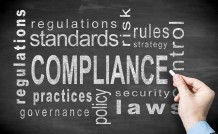 11 hours
1.1 CEUs
How to Write Effective Policies and Procedures
+ More Info
11 hours
1.1 CEUs
How to Write Effective Policies and Procedures
+ More Info
-
 8 hours
0.8 CEUs
Motivational and Public Speaking 101
+ More Info
8 hours
0.8 CEUs
Motivational and Public Speaking 101
+ More Info
-
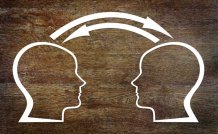 12 hours
1.2 CEUs
Writing Effective Persuasion
+ More Info
12 hours
1.2 CEUs
Writing Effective Persuasion
+ More Info
-
 5 hours
0.5 CEUs
Developing Great Social Skills
+ More Info
5 hours
0.5 CEUs
Developing Great Social Skills
+ More Info
-
 8 hours
0.8 CEUs
Crisis Management 101
+ More Info
8 hours
0.8 CEUs
Crisis Management 101
+ More Info
-
 8 hours
0.8 CEUs
Decision Making Skills
+ More Info
8 hours
0.8 CEUs
Decision Making Skills
+ More Info
-
 7 hours
0.7 CEUs
Leadership Skills for Managers
+ More Info
7 hours
0.7 CEUs
Leadership Skills for Managers
+ More Info
-
 9 hours
0.9 CEUs
Business Management
+ More Info
9 hours
0.9 CEUs
Business Management
+ More Info
-
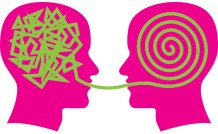 7 hours
0.7 CEUs
Effective Communication Skills
+ More Info
7 hours
0.7 CEUs
Effective Communication Skills
+ More Info
-
 7 hours
0.7 CEUs
Business Analysis
+ More Info
7 hours
0.7 CEUs
Business Analysis
+ More Info
-
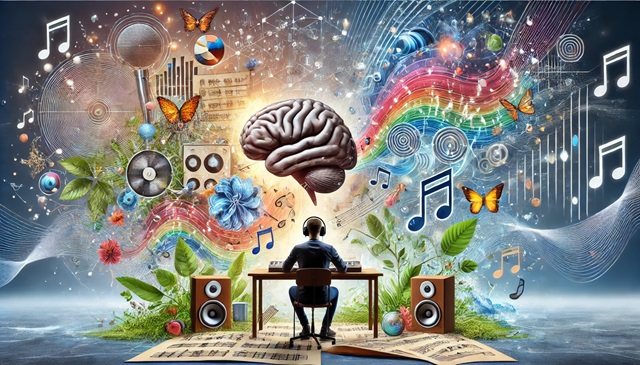 3 hours
0.3 CEUs
How to Improve Your Concentration
+ More Info
3 hours
0.3 CEUs
How to Improve Your Concentration
+ More Info
-
 9 hours
0.9 CEUs
Resume Writing 101
+ More Info
9 hours
0.9 CEUs
Resume Writing 101
+ More Info
-
 7 hours
0.7 CEUs
Personal Communication Skills Level 4
+ More Info
7 hours
0.7 CEUs
Personal Communication Skills Level 4
+ More Info
-
 8 hours
0.8 CEUs
Strategic Planning
+ More Info
8 hours
0.8 CEUs
Strategic Planning
+ More Info
-
 8 hours
0.8 CEUs
Business Ethics
+ More Info
8 hours
0.8 CEUs
Business Ethics
+ More Info
-
 5 hours
0.5 CEUs
How to Write a Business Plan
+ More Info
5 hours
0.5 CEUs
How to Write a Business Plan
+ More Info
-
 7 hours
0.7 CEUs
Lean Management
+ More Info
7 hours
0.7 CEUs
Lean Management
+ More Info
-
 15 hours
1.5 CEUs
Customer Service 101
+ More Info
15 hours
1.5 CEUs
Customer Service 101
+ More Info
-
 6 hours
0.6 CEUs
Management Essentials
+ More Info
6 hours
0.6 CEUs
Management Essentials
+ More Info
-
 9 hours
0.9 CEUs
Customer Relationship Management
+ More Info
9 hours
0.9 CEUs
Customer Relationship Management
+ More Info
-
 6 hours
0.6 CEUs
Sustainable Development for Business
+ More Info
6 hours
0.6 CEUs
Sustainable Development for Business
+ More Info
-
 6 hours
0.6 CEUs
Goal Setting for Business
+ More Info
6 hours
0.6 CEUs
Goal Setting for Business
+ More Info
-
 11 hours
1.1 CEUs
Writing Effective Emails in the Workplace
+ More Info
11 hours
1.1 CEUs
Writing Effective Emails in the Workplace
+ More Info
-
 16 hours
1.6 CEUs
Psychology 101
+ More Info
16 hours
1.6 CEUs
Psychology 101
+ More Info
-
 10 hours
1.0 CEUs
Mastering Sales Skills 101
+ More Info
10 hours
1.0 CEUs
Mastering Sales Skills 101
+ More Info
-
 14 hours
1.4 CEUs
Journalism 101
+ More Info
14 hours
1.4 CEUs
Journalism 101
+ More Info
-
 19 hours
1.9 CEUs
Business Writing
+ More Info
19 hours
1.9 CEUs
Business Writing
+ More Info
-
 3 hours
0.3 CEUs
Marketing Outreach
+ More Info
3 hours
0.3 CEUs
Marketing Outreach
+ More Info
-
 7 hours
0.7 CEUs
Healthy Relationships
+ More Info
7 hours
0.7 CEUs
Healthy Relationships
+ More Info
-
 5 hours
0.5 CEUs
Communicating with Diplomacy and Tact
+ More Info
5 hours
0.5 CEUs
Communicating with Diplomacy and Tact
+ More Info
-
 5 hours
0.5 CEUs
The Art of Setting Goals
+ More Info
5 hours
0.5 CEUs
The Art of Setting Goals
+ More Info
-
 6 hours
0.6 CEUs
Call Center Management
+ More Info
6 hours
0.6 CEUs
Call Center Management
+ More Info
-
 8 hours
0.8 CEUs
Procurement Management
+ More Info
8 hours
0.8 CEUs
Procurement Management
+ More Info
-
 6 hours
0.6 CEUs
Introduction to Abnormal Psychology
+ More Info
6 hours
0.6 CEUs
Introduction to Abnormal Psychology
+ More Info
-
 7 hours
0.7 CEUs
Organizational Behavior in Business
+ More Info
7 hours
0.7 CEUs
Organizational Behavior in Business
+ More Info


